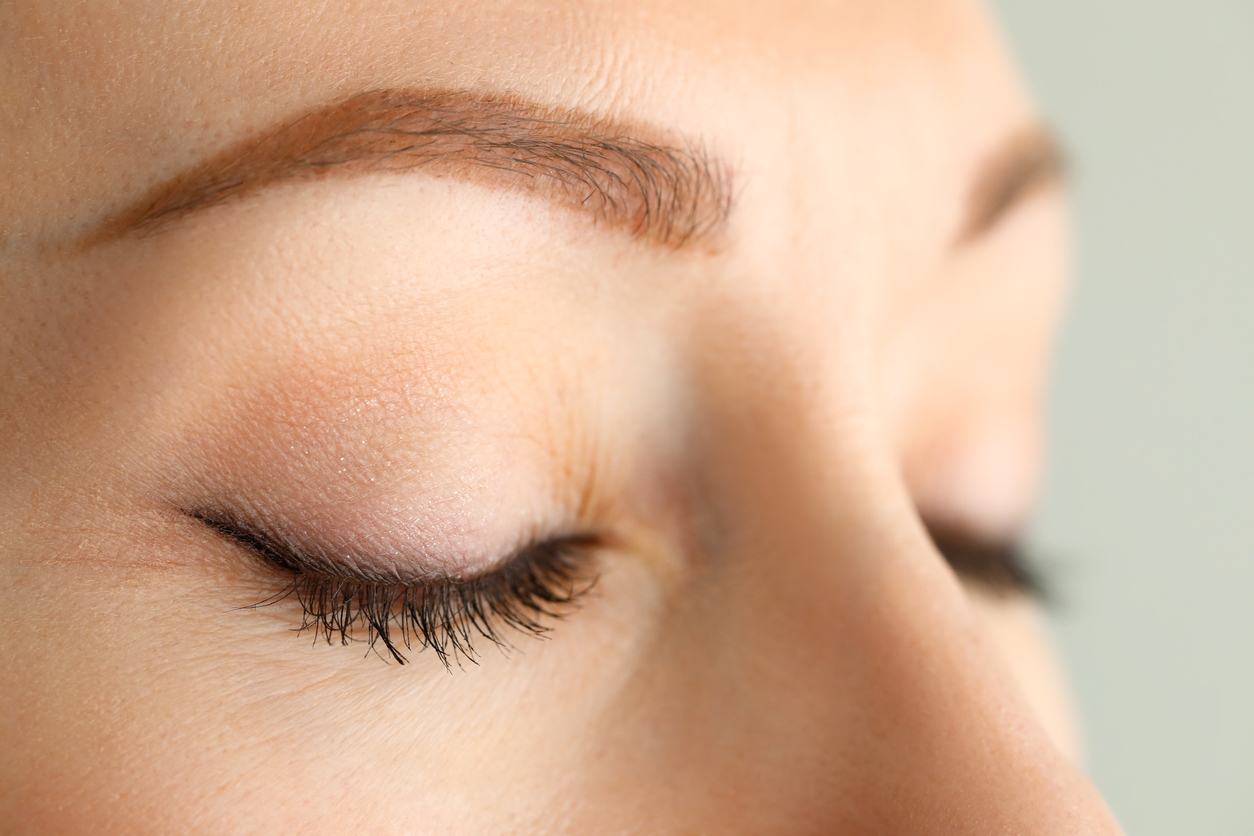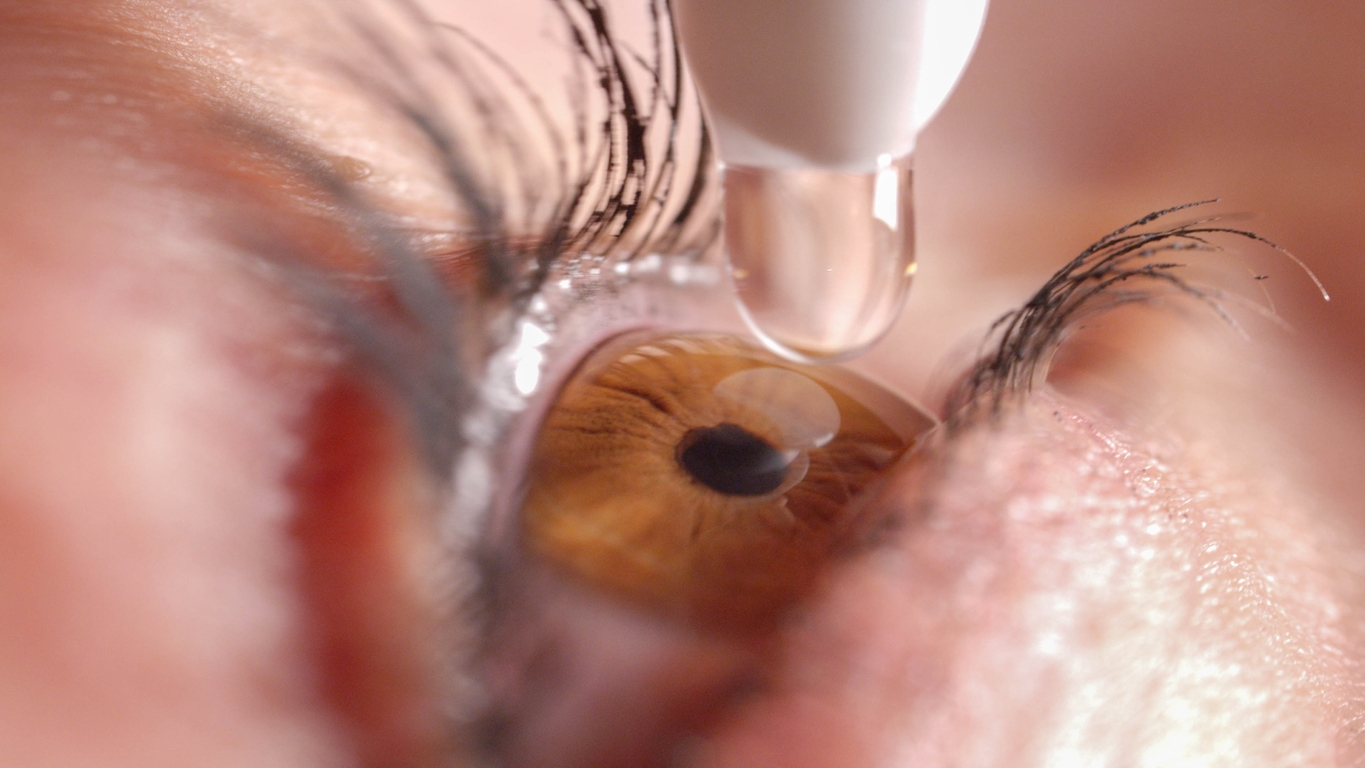Blinking is a seemingly simple, involuntary action that we perform countless times each day. Yet, beneath this unassuming act lies a complex and fascinating series of events. In this post, we delve into the science of blinking, uncovering the intricate mechanisms and the crucial role it plays in maintaining our visual well-being. From protecting our eyes to ensuring clear vision, blinking is a silent guardian of our ocular health.
What is Blinking?
Blinking is a common and often unobserved action. Yet, is an essential part of our ocular functioning. Blinking refers to the rapid closing and reopening of the eyelids. While it may seem simple, it is a crucial component of our visual system, protecting our eyes and ensuring clear vision.
The Semi-Autonomic Nature of Blinking
Blinking, in essence, is a semi-autonomic process, meaning it occurs without conscious effort yet can also be influenced by our will. [1] The act of blinking is triggered automatically to keep our eyes moist and clear. However, we can consciously blink more rapidly if needed, like when our eyes feel dry or irritated.
The Mechanics of Blinking
Blinking is orchestrated by a complex interplay of muscles and nerves. When the brain detects the need to moisten the eyes or protect them from foreign particles, it sends signals to facial muscles to initiate the blink. The upper eyelid descends, shielding the eye, and the lower eyelid rises to clear any debris. This rapid, coordinated movement helps maintain eye health and visual clarity.
The Physical Process of Closing and Opening Eyelids
The act of closing and opening our eyelids is a finely tuned physical process designed to protect and nourish our eyes. When we blink, it’s not a single, deliberate motion but rather a series of precise movements. The upper eyelid descends gracefully, shielding the eye, while the lower eyelid rises, sweeping away any foreign particles or excess moisture. This rapid, synchronized action keeps our eyes free from debris and well-hydrated.
Muscles Involved in Blinking
| Muscle | Function |
| Orbicularis Oculi | Closes the eyelids during blinking. |
| Levator Palpebrae Superioris | Raises the upper eyelid during opening. |
| Frontalis (Brow Muscle) | Assists in raising the eyebrows during blinking. |
Blinking is primarily orchestrated by the orbicularis oculi, responsible for closing the eyelids. [2] There are several other muscles involved, including the levator palpebrae superioris, which raises the upper eyelid during opening and frontalis (brow muscle). These muscles work in harmony, responding to signals from the brain to carry out the blink.
Purpose of Blinking
| Purpose | Description |
| Moistening the Eye Surface | Distributes a thin layer of tears across the eye surface to prevent dryness. |
| Protecting the Eye | Swiftly removes foreign particles, dust, or debris that may come into contact with the eye. |
| Maintaining Visual Clarity | Clears the eye’s surface, ensuring clear vision. |
Blinking serves a vital purpose. [3] It keeps the eye’s surface moist with a thin layer of tears, ensuring optimal optical conditions. It also acts as a protective mechanism, swiftly removing dust, pollen, or other irritants that might come into contact with the eye. While we may all have different eye colors, this silent, repetitive process plays a crucial role in ensuring our eye health and visual clarity.
Lubrication of the Eyeballs
Blinking serves as a natural mechanism for the lubrication of our eyeballs. [4] Each blink spreads a thin, protective layer of tears, known as the tear film, across the surface of the eye. This lubrication is vital to prevent dryness and maintain ocular comfort.
Importance of Eyeball Lubrication
| Aspect | Description |
| Prevents Dryness | Lubrication through blinking prevents dryness, ensuring ocular comfort. |
| Maintains Ocular Comfort | Lubrication keeps the eyes comfortable and prevents irritation or grittiness. |
| Supports Clear Vision | A well-lubricated eye surface is crucial for clear and unobstructed vision. |
| Prevents Eye Damage | Lubrication minimizes the risk of eye damage due to friction or irritation. |
| Nourishes the Eye Surface | Tears in the tear film provide essential nutrients to the eye’s surface tissues. |
Renewal of the Tear Film
Blinking contributes to the constant renewal of the tear film. This replenishment is essential for clear vision. The tear film consists of three layers, including an oily outer layer that prevents evaporation, a watery middle layer for nourishment, and a mucus layer that helps the tear film adhere to the eye’s surface. Blinking ensures this complex structure remains intact, promoting visual clarity.
Blinking and Vision
Blinking plays a significant role in sustaining optimal vision. [5] It helps to keep the eye moist, clear from irritants, and ensures the tear film functions effectively. Without blinking, our vision would be compromised, and the eyes would be vulnerable to discomfort and potential damage.
Ensuring a Smooth Surface for Light Focus
Blinking plays a crucial role in ensuring a smooth surface for light focus on the eye’s retina. Each blink spreads a thin layer of tears across the cornea, creating a smooth optical surface. This process is essential for clear vision and the accurate focusing of light onto the retina.
Prevention of Vision Blurriness
Blinking actively prevents vision blurriness by maintaining the integrity of the tear film and removing any tiny particles or debris that might obscure our vision. This constant renewal of the tear film is essential for preventing blurriness and maintaining visual clarity.
Blinking and Eye Health
Beyond visual clarity, blinking plays a significant role in overall eye health.
| Health Aspect | Description |
| Prevents Dryness | Blinking maintains adequate moisture on the eye’s surface, preventing dryness. |
| Reduces Risk of Irritation | Regular blinking reduces the risk of eye irritation caused by foreign particles or debris. |
| Supports Ocular Tissue Health | Adequate blinking contributes to the overall health of ocular tissues, including the cornea and conjunctiva. |
| Promotes Optical Clarity | By ensuring a smooth optical surface, blinking supports clear and focused vision, reducing the risk of blurriness. |
| Sustains Comfort | Blinking helps maintain ocular comfort, reducing discomfort or grittiness often associated with dry eyes. |
It prevents dryness, reduces the risk of eye infections, and supports the eyes’ natural defense mechanisms. For instance, you may have noticed your eyes becoming extra moist after a bike ride or the whirlwind ride of a roller coaster. This happens because the wind dries out your eyes making your tear glands work more. Consistent blinking is a fundamental aspect of maintaining the well-being of our eyes and preserving our ability to see clearly. [6]
Cleaning the Ocular Surface
Blinking serves as a natural mechanism for cleaning the ocular surface. [7] With each blink, the eyelids sweep across the eye’s surface, removing tiny particles, dust, or pollutants that may have settled on the eye. This constant “cleansing” action is essential for maintaining a clear and healthy eye.
Flushing Fresh Tears Over the Ocular Surface
Blinking also functions as a means of refreshing the tear film that covers the eye’s surface. This tear film consists of multiple layers that provide nourishment and moisture to the eye. Blinking helps distribute a fresh layer of tears, ensuring the eye remains well-hydrated and nourished.
Factors Influencing Blink Rate
The rate at which we blink can be influenced by various factors. These factors include environmental conditions (such as humidity and air quality), lighting conditions, the use of digital screens, and individual habits.
| Factors | Description |
| Environmental Conditions | Humidity levels, air quality, and temperature can affect how often we blink. Dry or dusty environments may lead to increased blinking. |
| Lighting Conditions | Bright or harsh lighting can lead to increased squinting and blinking to reduce discomfort and glare. |
| Emotional State | Stress, anxiety, or concentration on a particular task can influence blink rate, with increased stress potentially leading to reduced blinking. |
| Individual Habits | Personal habits, such as staring at a screen for long periods or not taking regular breaks, can affect how often we blink. |
| Ocular Health | Eye conditions like dry eye syndrome or allergies can alter blink rate as the body attempts to compensate for discomfort. |
Understanding these influences on blink rate is essential for maintaining eye comfort and health in different contexts.
Computer Vision Syndrome
Computer Vision Syndrome (CVS) is a condition associated with prolonged use of digital screens. [8] Individuals experiencing CVS often exhibit symptoms like eye strain, dry eyes, and headaches. Reduced blinking during prolonged screen use contributes to these symptoms, emphasizing the importance of conscious blinking habits during digital activities.
Environmental Factors and Blinking Frequency
Environmental factors significantly impact blinking frequency. In settings with low humidity, excessive dust, or strong winds, individuals tend to blink more frequently to protect their eyes. Conversely, in controlled indoor environments, blink rates may decrease.
| Environmental Factors | Influence on Blinking Frequency |
| Low Humidity | Increases blinking to prevent dryness. |
| High Airborne Particles | Prompts more blinking to protect from irritants. |
| Optimal Conditions | May result in a natural decrease in blink rate. |
| Bright Lighting | Often leads to increased blinking for comfort. |
| Low Lighting | May reduce blinking due to decreased strain. |
| Outdoor Environments | Wind and sunlight can prompt protective blinking. |
Blinking in Different Species
The act of blinking is a universal physiological function observed across various species. [9]
| Animal | Blinking Patterns |
| Humans | Regular, frequent blinking to maintain eye moisture and clear vision. |
| Birds | Use a nictitating membrane for protection during flight and feeding. |
| Cats | Blink less frequently, often associated with a self-soothing behavior. |
| Reptiles | Limited blinking due to protective scales; some species lack eyelids. |
| Aquatic Mammals | Minimal blinking, with specialized adaptations for underwater vision. |
While the mechanisms and frequencies of blinking differ, the fundamental purpose remains consistent – to moisten and protect the eyes. Examining blinking in different species provides valuable insights into the shared evolutionary importance of this protective response.
Comparison of Blinking Patterns in Various Animals
Different animals exhibit distinct blinking patterns tailored to their environmental adaptations and eye structures. Some species, like birds, have specialized membranes that act as protective shields. Comparative studies of blinking in various animals contribute to our understanding of how this vital function has evolved to meet specific needs within diverse ecosystems. [10]
Evolutionary Perspective on Blinking
Taking an evolutionary perspective on blinking underscores its adaptive significance. Throughout the evolutionary timeline, blinking has persisted as a mechanism to safeguard ocular health and maintain visual function. The variations in blinking patterns across species highlight the intricate interplay between environmental demands and the evolution of protective mechanisms.
Conclusion
The simple yet essential act of blinking transcends species boundaries, demonstrating its universal significance in preserving ocular health and visual function. While the mechanics and frequencies of blinking may vary across the animal kingdom, its fundamental purpose remains unwavering – to safeguard the eyes from environmental threats, maintain moisture, and ensure clear vision. From an evolutionary perspective, blinking stands as a testament to the enduring importance of this protective response. Whether it’s in the skies, on land, or beneath the waves, the act of blinking endures as an unassuming yet vital part of the intricate tapestry of life on Earth, silently preserving the gift of sight for countless species.





